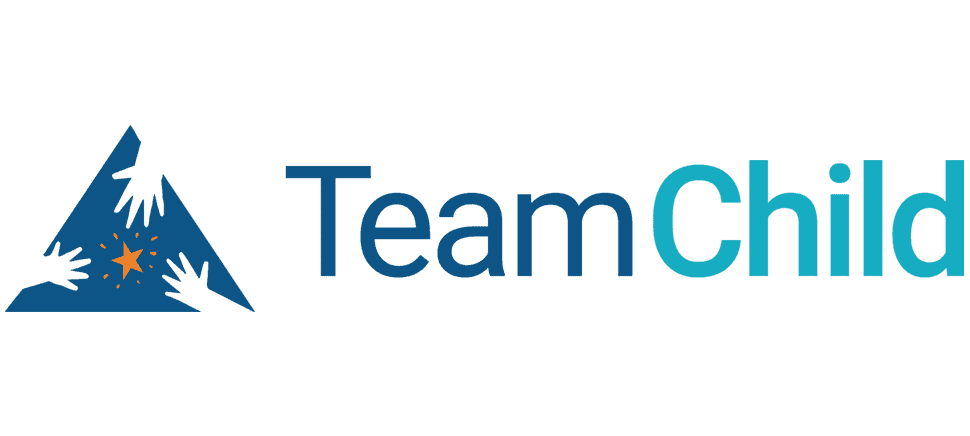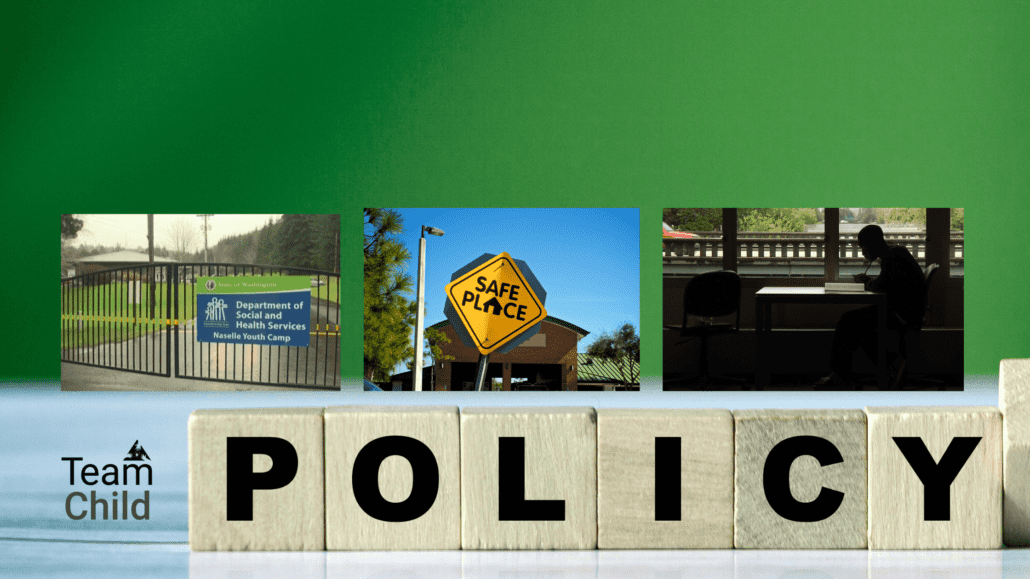Policy Goals and Priorities
TeamChild has been busy this summer preparing our goals and priorities for the next legislative session. We continue to align our policy priorities with our broad impact goals, including:
- Decriminalization, decarceration, and abolition;
- Expanding and investing in community-led and community-based alternatives and resources;
- Increasing equitable access to education, healthcare, and housing supports; and
- Shifting power and repairing harm in Black, Indigenous and other communities of color.
We have met with many partner organizations, community members, TeamChild staff, clients, and families to help determine the priorities we can support this year. We hope to make an impact for youth in education, stable and safe housing, removing post-conviction burdens and barriers, and reducing the use of incarceration to respond to the needs of young people.
With that in mind, here are our four main policy goals:
1. Eliminate the use of isolation in the public school system.
The use of isolation and restraint in the public school system as a response to youth behavior is harmful. Washington state significantly restricted the use of these techniques in 2015 by passing HB 1240, stating “there is no educational or therapeutic benefit to children from physically restraining or isolating them as part of their public school programs when not necessary for immediate safety.” Despite the state’s efforts to reduce and restrict the use of these harmful practices, TeamChild continues to represent youth who have experienced restraint and isolation in schools that fall outside the narrow permission provided by the law, which is “imminent likelihood of serious harm to that student or another person.”
Many efforts are underway to develop the skills and techniques staff need to improve school climate, incorporate social and emotional learning into the curriculum, and increase school nurses, social workers, and other support staff who can meet the needs of all students who come to school. These efforts will help to create an environment where staff do not resort to the use of isolation and restraint. TeamChild is working with other advocates to build on the work of creating a school environment that is safe for everyone in our public school system. Our goal this year is to eliminate isolation entirely, which includes decommissioning “quiet rooms” and other isolating locations that school staff use to separate youth from everyone else in the educational environment.
2. Eliminate the remaining juvenile fees and fines and lift the burden of restitution from youth so that victims can be healed without creating insurmountable debt for young people.
Washington state has made tremendous progress in eliminating the burdens of fees and fines for youth who are in the juvenile legal system. We are very proud of the YEAR Act, which passed in 2015, and has been a life-changer for many youth who would otherwise never be able to move forward from their juvenile offenses, even after serving time in prison, completing treatment, and making other significant changes in their lives. However, there remain some fees and fines that are applied unequally throughout the state that can create long-term debt and credit barriers for youth as they transition to adulthood and self-sufficiency.
Furthermore, the expectation that youth can make victims whole through restitution is unrealistic and unfair. Most youth who are ordered to pay restitution do not have the money either at the time of their adjudication, or in the decades that follow. After spending years in prison, and trying to navigate back to the community upon release by establishing safe housing and employment, the additional barrier of thousands of dollars of restitution creates insurmountable barriers for young adults. It also never makes the victim whole, as they wait years or decades for financial renumeration that may never realistically come. Our priority this year is to seek system change that creates state funded restitution options so that victims can truly be made whole, while eliminating long-term debt for youth who are making significant efforts to overcome the juvenile legal system post-conviction barriers to self-sufficiency.
A Groundbreaking report on the harms of juvenile restitution can be found here.
3. Expanding the access to safe shelter for youth experiencing homelessness.
Young people continue to experience instability in housing at high numbers in Washington state, and make up a significant number of referrals to TeamChild. We are working collectively with youth and young adults, housing providers and advocates, state agencies, and other legal advocates to develop proposals that will create more stability for youth experiencing homelessness. Our first goal is to expand the ability for young people under the age of 18 to remain in shelters, if needed, beyond the current limited time (often 15 or 30 days) because we know that it may take longer to access the services and connections needed to create long term stability. Our second goal is to make sure any changes center the needs and goals of the young people who are experiencing housing instability, so that their voice has power to obtain the outcome they need.
4. Ensuring state funds are prioritizing solutions grounded in the needs and goals of youth, communities, and families that are impacted by youth incarceration.
With the closing of Naselle Youth Camp, the Washington State Department of Children Youth and Families (DCYF) Juvenile Rehabilitation (JR) is exploring ways to meet the needs of young people who might otherwise have been placed in Naselle’s medium security facility. TeamChild’s policy goal is to ensure that state and local resources prioritize providing support to communities and families to meet the needs of young people as close to their home as possible. If resources are considered for additional JR facilities and services, we hope the state will also invest in resources for local communities to develop the infrastructure to allow more youth to be diverted from JR facilities and long-term prison sentences.
We hope you will continue to follow our advocacy efforts, reach out to us at [email protected] if you have personal experiences on these issues that you would like to share with us, and help us communicate these priorities to decision-makers and the larger community.



